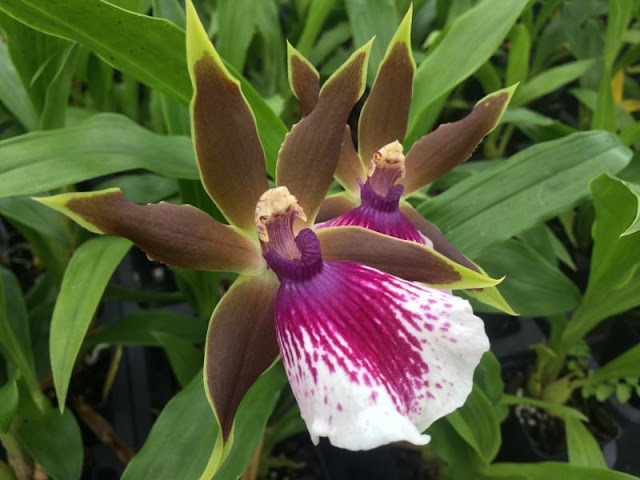
74th annual event set for Scottish Rite Masonic Center

|
|
Zygolum Rhein Harlequin is a striking hybrid orchid. See many others at the April 9-10 Sacramento Orchid Show. (Photo courtesy Sacramento Orchid Society)
|
More proof that gardening life is returning to “normal”: More flower shows!
The 74th Sacramento Orchid Show returns to the Scottish Rite Masonic Center on April 9 and 10.
After coping with Covid restrictions the last two years, the Sacramento Orchid Society welcomes back its many exhibitors and vendors in one of the best tropical plant shows in Northern California.
See hundreds of orchids in many species in full bloom as part of the evocative theme, “Summer Orchid Samba.”
Besides the show, orchid vendors will offer scores of plants for sale including a wide selection of species and rarities. Looking for a specific color or variety? This is the place.
Both days, orchid experts will conduct demonstrations and offer seminars on growing orchids. Learn how to get orchids to rebloom year after year.
Admission is $10. Door prizes will be offered along with tours of the show. Parking is free.
Hours are 10 a.m. to 5 p.m. Saturday, April 9, and 10 a.m. to 4 p.m. Sunday, April 10.
The Scottish Rite Masonic Center is located at 6151 H St., Sacramento.
Details: www.sacramentoorchids.org .
Comments
0 comments have been posted.Sacramento Digs Gardening to your inbox.
Sites We Like
Garden Checklist for week of July 21
Your garden needs you!
* Keep your vegetable garden watered, mulched and weeded. Water before 8 a.m. to reduce the chance of fungal infection and to conserve moisture.
* Feed vegetable plants bone meal, rock phosphate or other fertilizers high in phosphate to stimulate more blooms and fruiting. (But wait until daily high temperatures drop out of the 100s.)
* Don’t let tomatoes wilt or dry out completely. Give tomatoes a deep watering two to three times a week.
* Harvest vegetables promptly to encourage plants to produce more. Squash especially tends to grow rapidly in hot weather. Keep an eye on zucchini.
* Pinch back chrysanthemums for bushy plants and more flowers in September.
* Remove spent flowers from roses, daylilies and other bloomers as they finish flowering.
* Pinch off blooms from basil so the plant will grow more leaves.
* Cut back lavender after flowering to promote a second bloom.
* It's not too late to add a splash of color. Plant petunias, snapdragons, zinnias and marigolds.
* From seed, plant corn, pumpkins, radishes, winter squash and sunflowers.